When in bloom, flower gardens are a sight to behold, full of a rainbow of colors, delicate petals, feathery foliage, and other intriguing textures. But garden design can involve more than simply visual elements. Incorporating pleasant aromas into your flower beds can take your garden to the next level and create an outdoor environment that feels like a world of its own.

In this article, we’ll investigate some of the best fragrant flowers to grow. These plants can be sown singly to create a delicate aroma that will be sure to delight garden visitors. Or you can plant a variety of these specimens throughout your landscape to create a dedicated fragrance garden that will feel like a true oasis after a hard day’s work.
Jump to:
- 20 Fragrant Flowers to Add to Your Scent Garden
- 1. Lilac (Syringa vulgaris)
- 2. Rose (Rosa spp.)
- 3. Jasmine (Jasminum officinale)
- 4. Gardenia (Gardeniajasminoides)
- 5. Hyacinth (Hyacinthusorientalis)
- 6. Angel’s Trumpet (Brugmansia spp.)
- 7. Tuberose (Agave amica)
- 8. Milkweed (Asclepias spp.)
- 9. Flowering Tobacco (Nicotiana alata)
- 10. Honeysuckle (Lonicera spp.)
- 11. Butterfly bush (Buddleia spp.)
- 12. Heliotrope (Heliotropium arborescens)
- 13. Tall Phlox (Phlox paniculate)
- 14. Freesia (Freesia spp.)
- 15. Joe Pye Weed (Eutrochium purpureum)
- 16. Wisteria (Wisteria spp.)
- 17. Daphne (Daphne odora)
- 18. Peonies (Paeoniaspp.)
- 19. Mock Orange (Philadelphusspp.)
- 20. Sweet Pea (Lathyrusodoratus)
- Frequently Asked Questions
- Summary
20 Fragrant Flowers to Add to Your Scent Garden
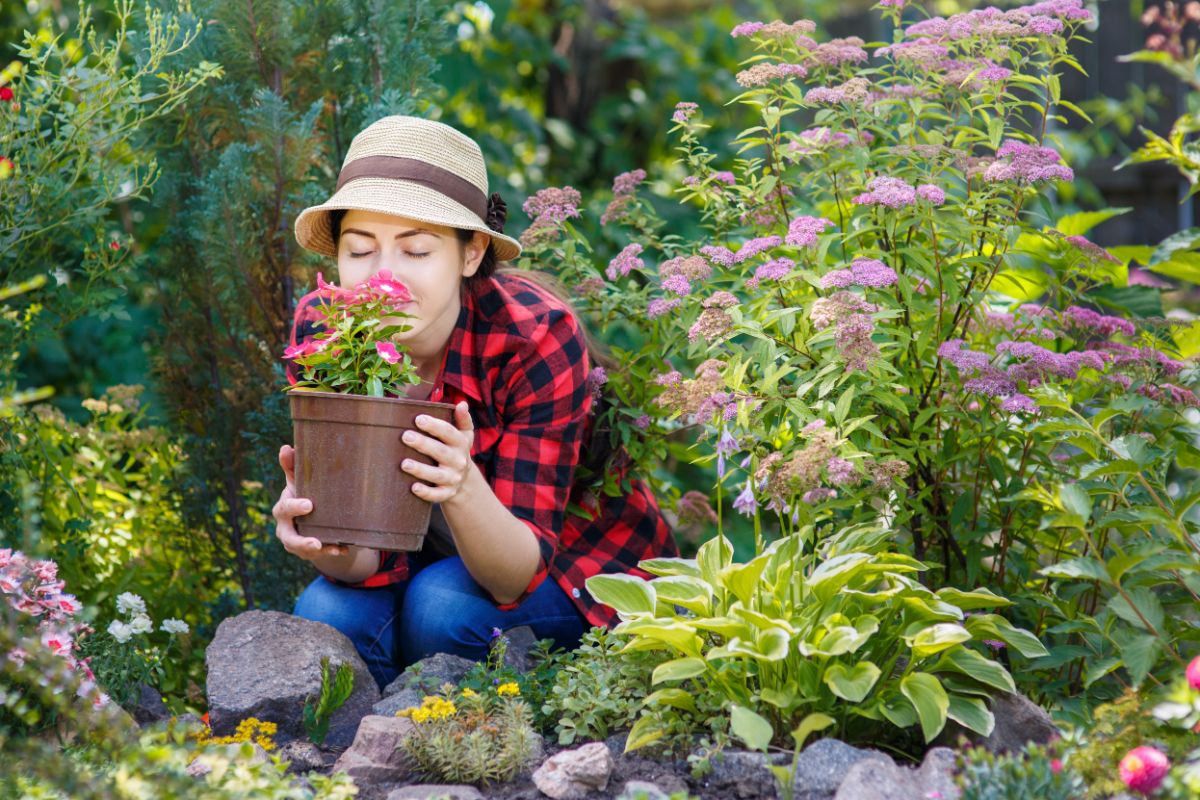
Below are our top choices of the best fragrance plants to grow in your garden. Some of these plants grow compactly, making them just right for container gardens and limited outdoor spaces. Other plants, shrubs, and trees are much larger and require a more spacious garden to house them.
No matter the plants you choose, we recommend planting a few different aromatics in your landscape to uplift your space and create a heavenly fragrance garden you won’t be able to get enough of!
1. Lilac (Syringa vulgaris)
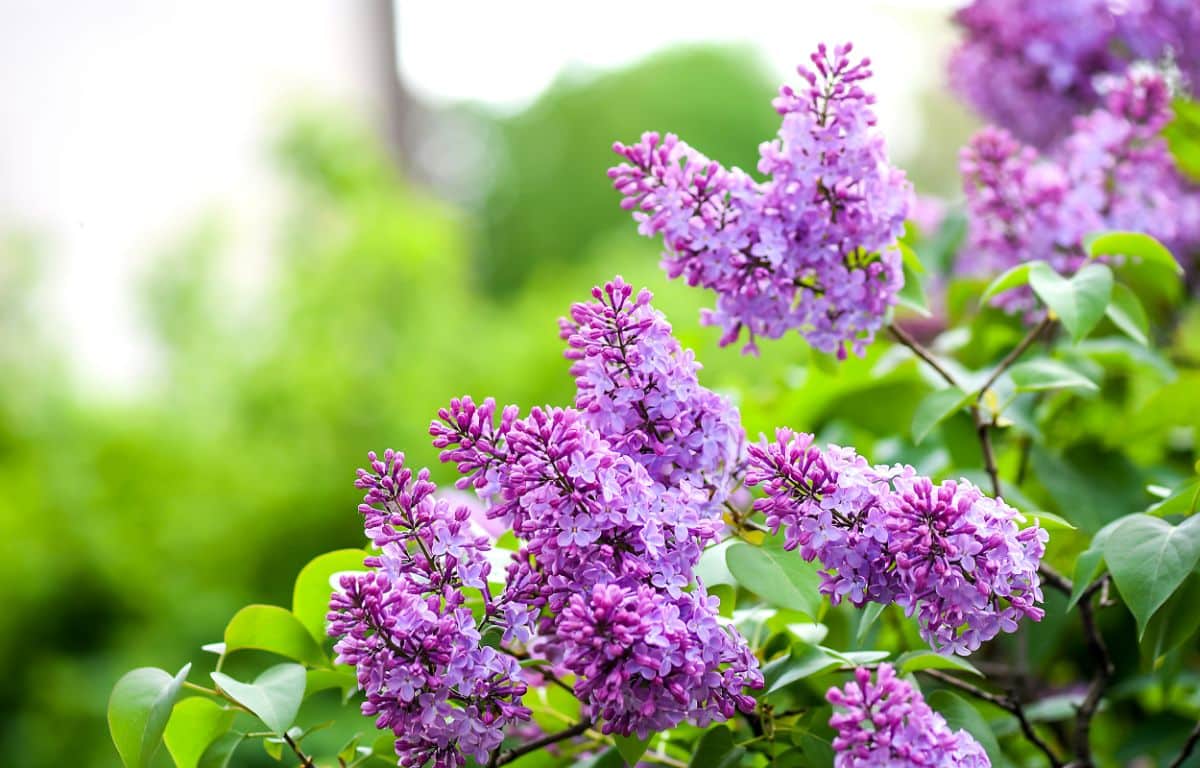
| Plant name: | Lilac |
| Lighting requirements: | Full sun |
| Watering requirements: | Moderate |
| Bloom time: | April through June |
| Growing zone: | Zones 3 to 8 |
Who doesn’t love the sweet floral fragrance of lilacs streaming in through an open window in springtime? These gorgeous flowering shrubs have one of the most recognizable fragrances of any garden plant. It’s no wonder why so many fragrances and home products are scented with lilac.
In the garden, lilacs can grow up to 15’ tall; however, dwarf varieties are available for smaller garden spaces and patio planters. Lilacs have heart-shaped leaves and very distinct flowers that are long and columnar in form and are composed of many smaller four-petal blooms. Lilacs most commonly come in shades of purple, but they are available in pink and white too.
2. Rose (Rosa spp.)
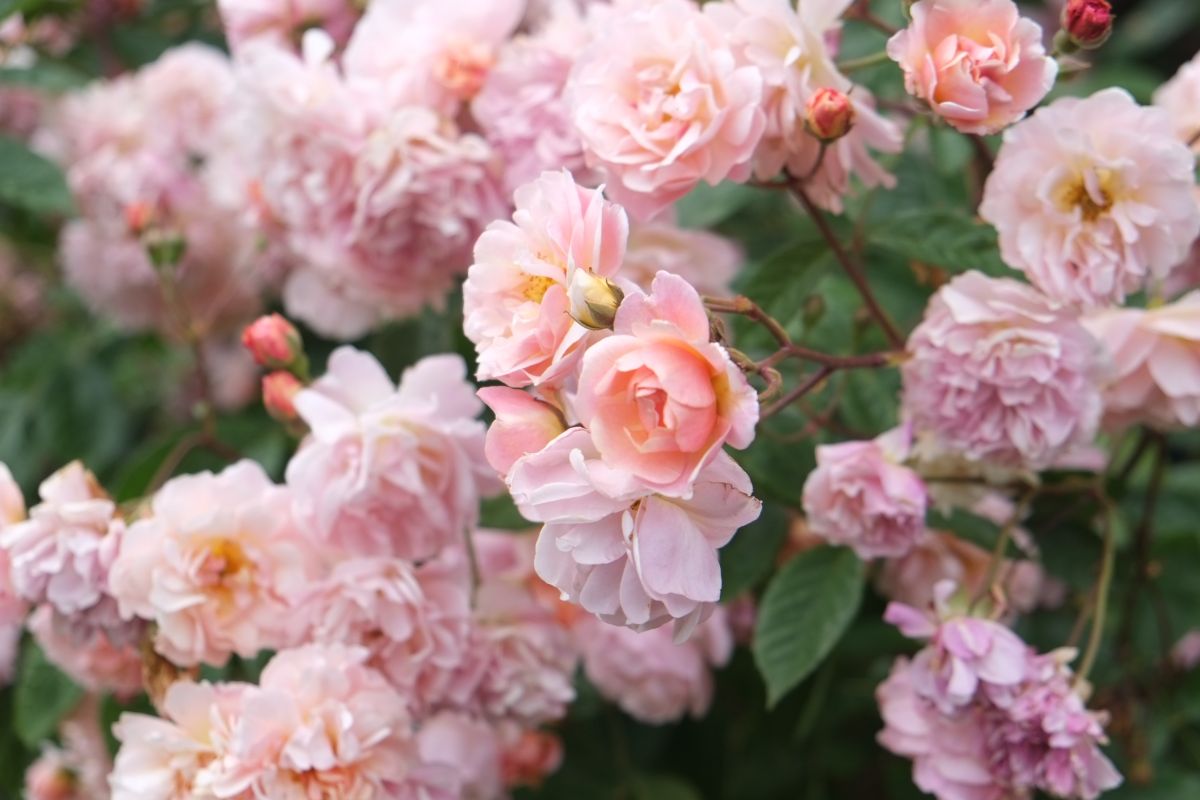
| Plant name: | Rose |
| Lighting requirements: | Full sun |
| Watering requirements: | Moderate |
| Bloom time: | Late spring to early fall |
| Growing zone: | Zones 5 to 10 |
Rose is one of the most beloved fragrances in the world. So, if you’re looking to create a scent garden, you need to leave space for at least a rose bush or two.
Over time, selective breeding has produced some unscented rose cultivars, which have been grown to favor flower appearance over aroma. For this reason, if you want to get the most richly fragranced roses, look for English roses or Old World rose varieties. Some good choices are ‘Mr. Lincoln,’ ‘Gertrude Jekyll’ and ‘Boscobel.’
Roses are the type of plant that it’s difficult to grow just one of. There are so many bloom sizes and colors to choose from; many gardeners opt to create entire garden beds or backyards full of roses. If you plan on keeping roses in your garden space, try companion planting your roses with scented herbs (like thyme, geraniums, and rue) to naturally repel insect pests.
3. Jasmine (Jasminum officinale)
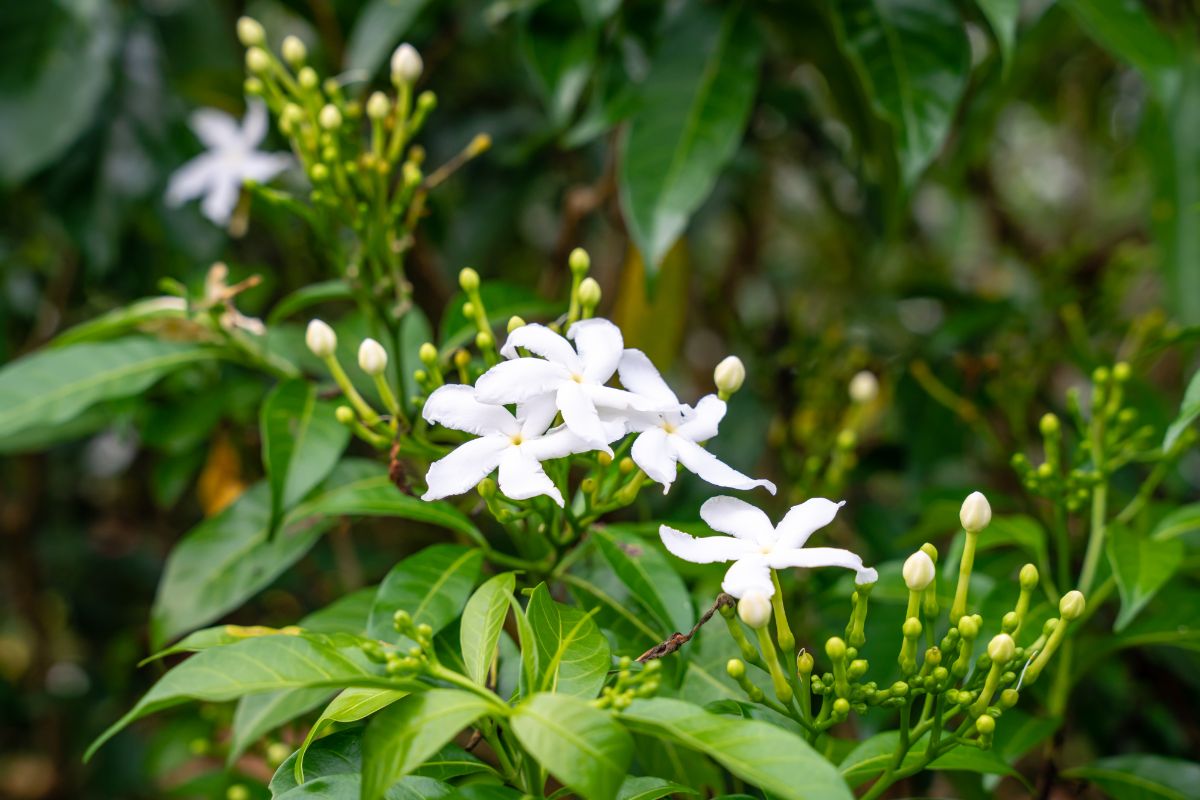
| Plant name: | Jasmine |
| Lighting requirements: | Full sun to part shade |
| Watering requirements: | Moderate |
| Bloom time: | Spring to fall |
| Growing zone: | Zones 7 to 10 |
Many flowers utilize subtle fragrances to attract pollinators; however, there’s nothing subtle about jasmine. This sweet plant has an equally sweet aroma that can enliven garden spaces and create a magical feel to garden beds. Some jasmine varieties are even climbing, making them wonderful solutions for garden walkways and trellises.
As a heat-loving plant, most jasmine varieties don’t do well in colder climates. Some jasmine types are also fragrance-free, so make sure you know what cultivar you’re buying. Some of the best jasmine types for scent gardens include ‘Common White’ jasmine, ‘Arabian’ jasmine, and ‘Angel Wing’ jasmine.
4. Gardenia (Gardeniajasminoides)
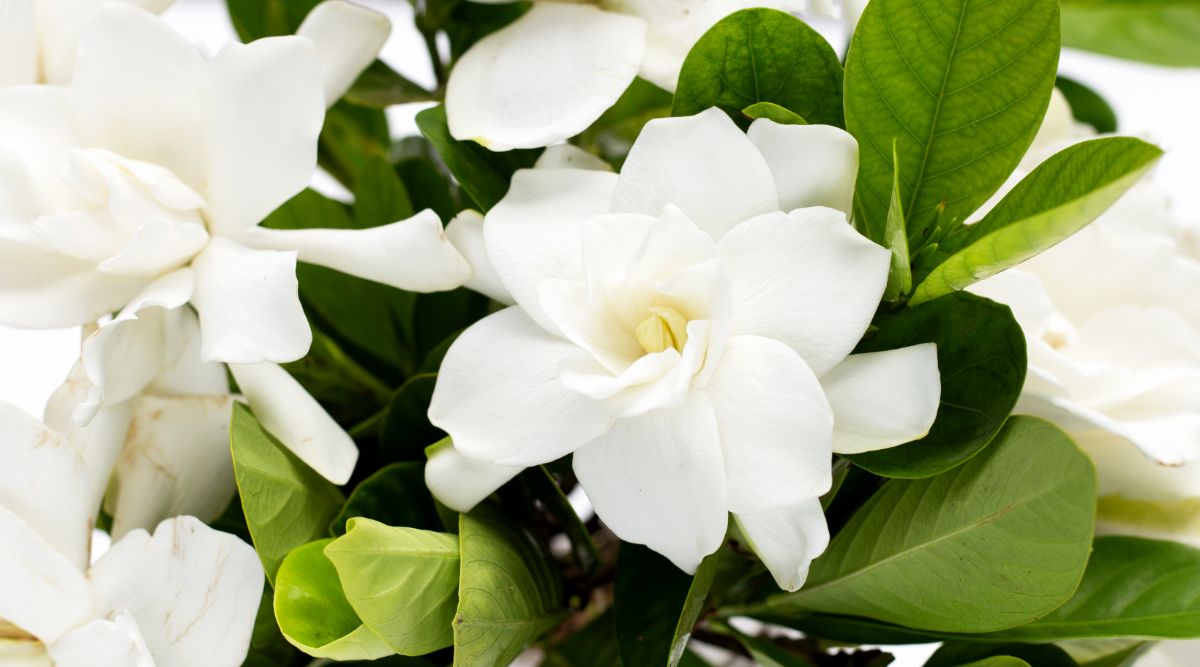
| Plant name: | Gardenia |
| Lighting requirements: | Full sun, prefer some dappled shade in the afternoon in hot climates |
| Watering requirements: | Moderate |
| Bloom time: | Late spring to early summer |
| Growing zone: | Zones 8 to 11 |
A favorite among southern gardeners, gardenias are another very popular fragrance plant. While these plants are only hardy down to zone 8, they can be kept as houseplants or grown in containers. Container plants can be simply shifted indoors in autumn when temperatures start to fall to protect your plants from frigid temperatures.
Gardenia flowers look a bit like roses, with layers of soft, white petals extending from the flower’s pale center. Leaves are glossy and taper towards their tips, creating a perfect complement to the plant’s blooms. Plants grown from cuttings or nursery starts will bloom much quicker than plants grown from seed and should produce a profusion of sweetly scented flowers in late spring to summer.
5. Hyacinth (Hyacinthusorientalis)
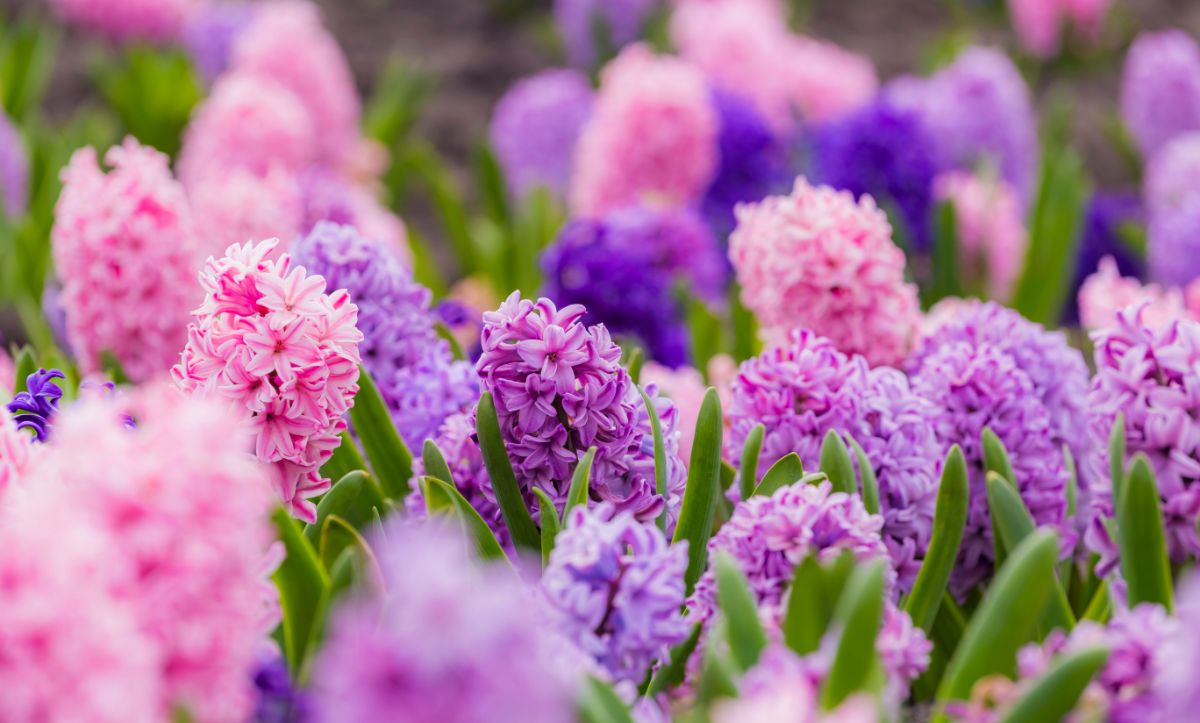
| Plant name: | Hyacinth |
| Lighting requirements: | Full sun to part shade |
| Watering requirements: | Low |
| Bloom time: | Early to mid-spring |
| Growing zone: | Zones 4 to 8 |
One of the most popular flowering bulb varieties, hyacinths are best planted in autumn in well-draining soil. After planting, hyacinth bulbs usually overwinter well and begin blooming in springtime with oversized flowers in purples, pinks, yellows, red, and white.
While hyacinths can be planted on their own, they look even more stunning when planted together in drifts or when intermingled with other spring bloomers, like daffodils. Thanks to their small size, hyacinths are small and space-friendly and grow well in container gardens too. They can even be grown indoors with a little finesse – just keep them away from house pets, as they are toxic if ingested.
6. Angel’s Trumpet (Brugmansia spp.)
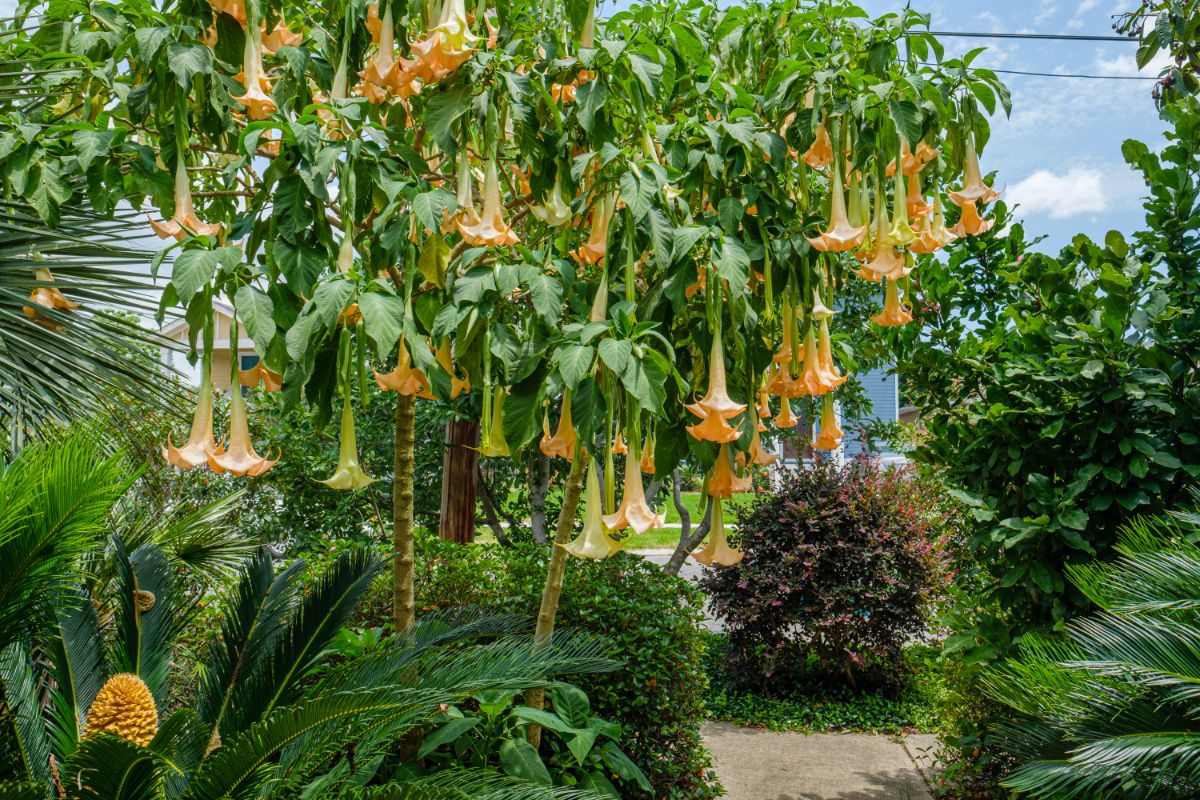
| Plant name: | Angel’s trumpet |
| Lighting requirements: | Full sun |
| Watering requirements: | High |
| Bloom time: | Late spring to fall |
| Growing zone: | Zones 9 to 12 |
Angel’s trumpets are ornamental plants that belong to the Solanaceae family, which also includes tomatoes, peppers, and eggplants. These stunning specimens can grow up to 25’ tall and develop woody stems to support their large, trumpet-shaped flowers. Those impressive blooms come in a range of colors, including pale pinks and yellows, and can measure up to 20” long!
Angel trumpet flowers are very fragrant; however, their aroma is most apparent after dark. This makes them particularly alluring to nighttime pollinators like moths and hawkmoths. Just be warned, angel’s trumpets are toxic if ingested.
7. Tuberose (Agave amica)
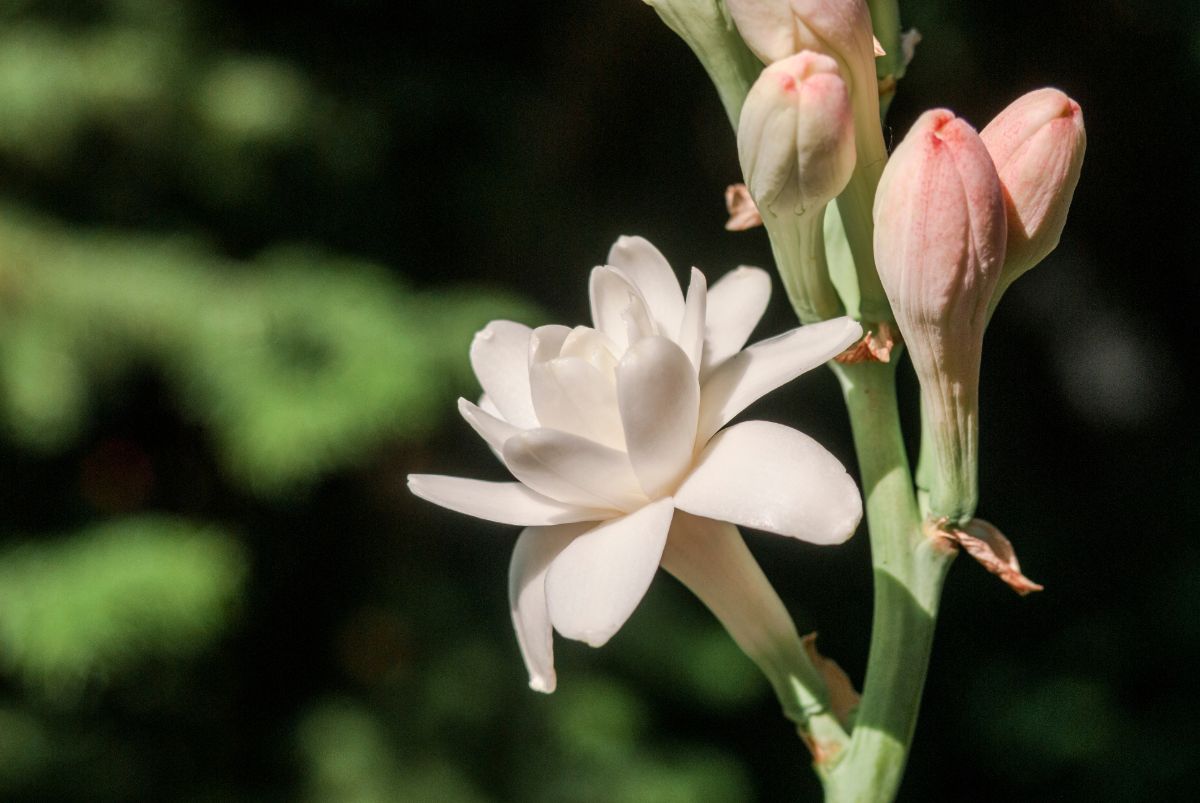
| Plant name: | Tuberose |
| Lighting requirements: | Full sun |
| Watering requirements: | Moderate |
| Bloom time: | Mid- to late summer |
| Growing zone: | Zones 7 to 10 |
A member of the Asparagus family, tuberose is native to Central America and Mexico. White, waxy flowers produce a heady aroma, which is so coveted it is often used as a fragrance in expensive perfumes and oils. In the garden, tuberose’s scent is hard to beat and impossible to ignore.
Flowers are tubular in form, making them very seductive to pollinators like hummingbirds. Mature plants grow to about 3’ in height and do best with regular fertilizing and consistently moist soil. For a true treat, try including some tuberose blooms in your homemade bouquets and allow the rich aroma to fill up your home.
8. Milkweed (Asclepias spp.)
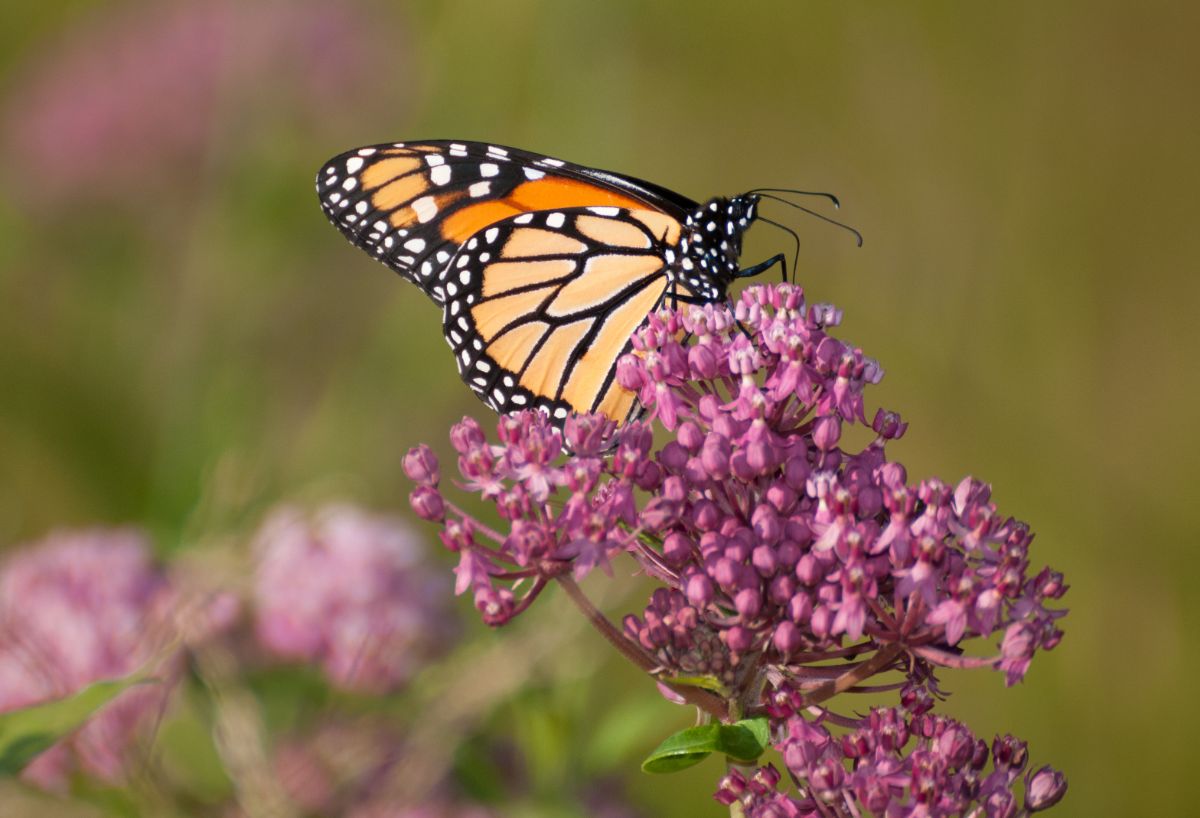
| Plant name: | Milkweed |
| Lighting requirements: | Full sun |
| Watering requirements: | Low |
| Bloom time: | June through August |
| Growing zone: | Zones 4 to 9 |
Milkweed is a must-have plant in pollinator gardens, but did you know it has a luscious scent too? Milkweed uses its fine aroma to attract pollinators, like monarch butterflies, to help spread its pollen about. But that fragrance also makes it a wonderful addition to ornamental beds and dedicated fragrance gardens.
Milkweed is an easy-to-grow plant that can be raised from seeds or nursery starts. Purple-toned flowers bloom in clusters in late summer to early fall and are sure to attract pollinators to your outdoor space. Plants are low maintenance and drought-resistant and grow compactly enough for container planters too!
9. Flowering Tobacco (Nicotiana alata)
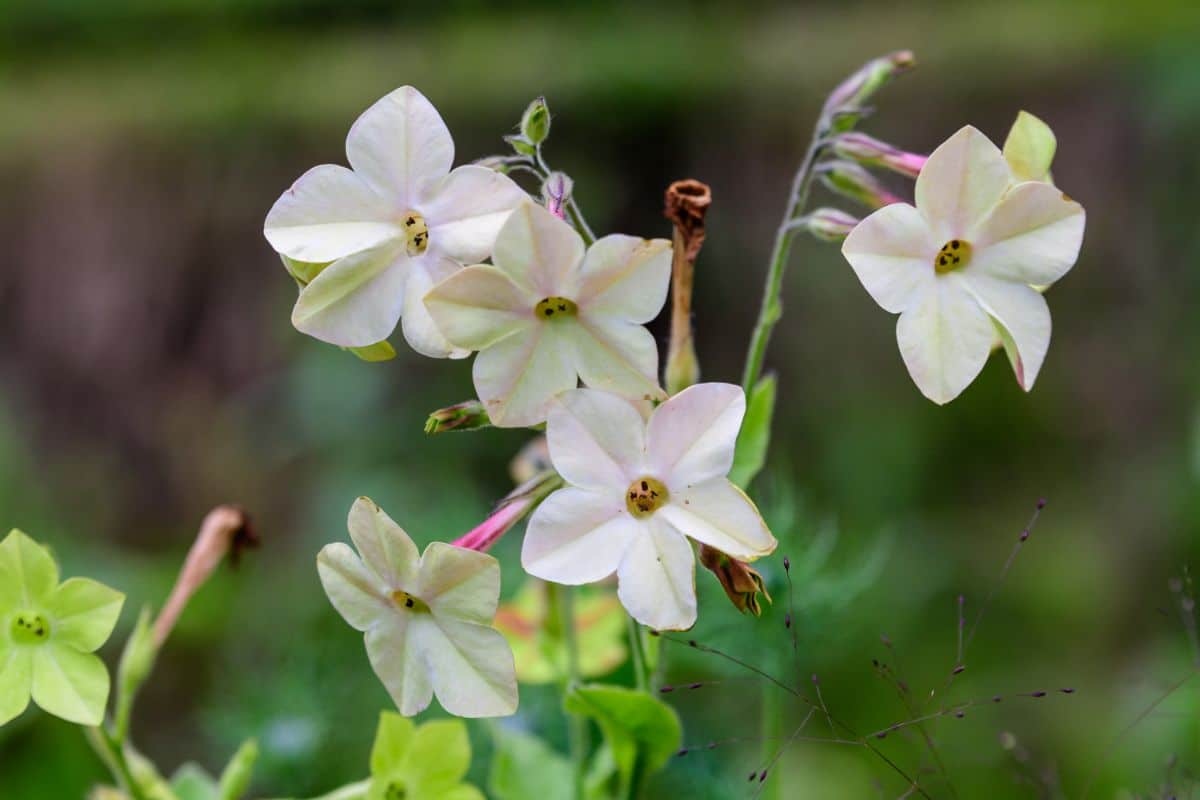
| Plant name: | Flowering tobacco |
| Lighting requirements: | Full sun to part shade |
| Watering requirements: | Moderate |
| Bloom time: | Early summer to fall |
| Growing zone: | Zones 9 to 10 |
A relative of common tobacco, flowering tobacco is not for smoking, but it does have a rich, luscious scent that can make your head spin! The colorful flowers come in white, pink, yellow, red, and lime green and look oh-so-pretty in container gardens and inground beds alike. For an even more “wow factor,” try out flowering tobacco in a moon garden as its scent intensifies after dark.
Flowering tobacco is a pollinator favorite, and the tubular-shaped flowers are particularly appealing to hummingbirds. In warmer regions (zones 10 and 11), this plant can be grown as a perennial, but it is kept as an annual in chillier climates. Luckily, it’s very easy to start from seed – just plant your seeds indoors in early spring and transplant your seedlings outside after the danger of frost has passed.
10. Honeysuckle (Lonicera spp.)
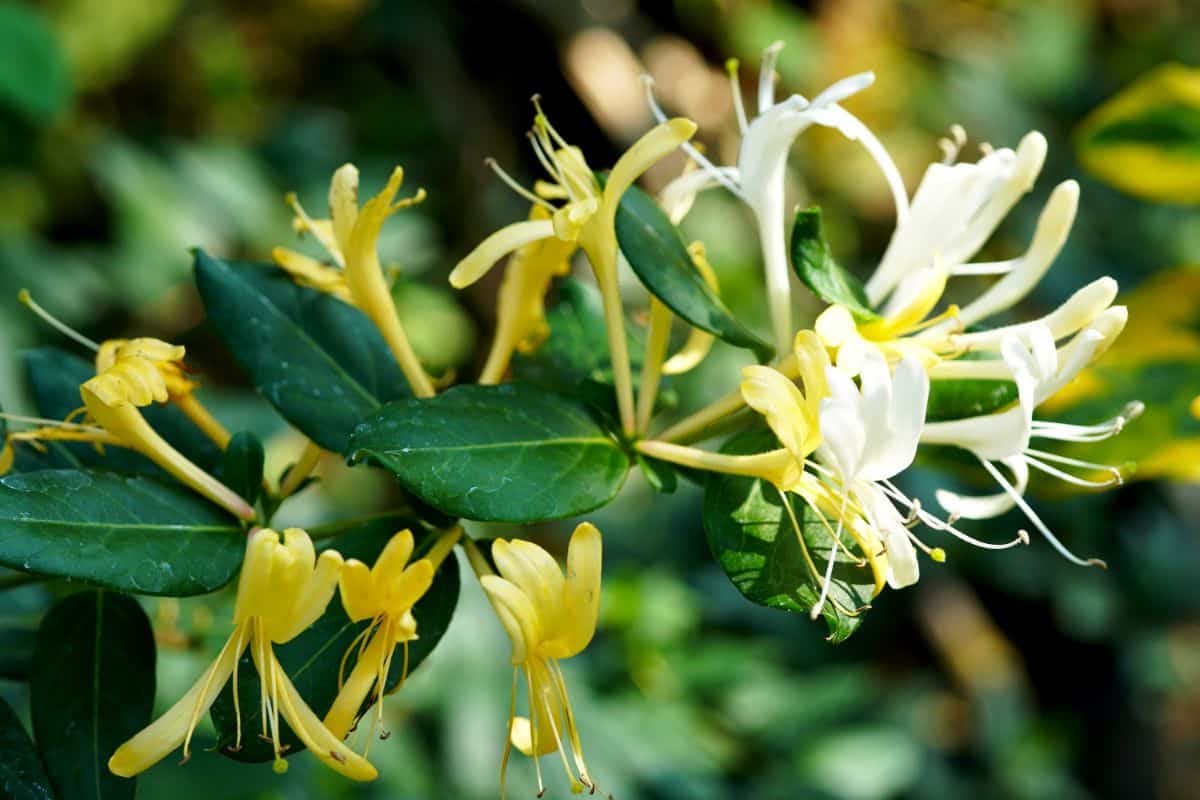
| Plant name: | Honeysuckle |
| Lighting requirements: | Full sun |
| Watering requirements: | Moderate |
| Bloom time: | May through mid-summer |
| Growing zone: | Zones 5 to 9 |
Like flowering tobacco and jasmine, honeysuckle has long, thin and tubular flowers that are irresistible to hummingbirds and other pollinators. Flowers come in yellows, pinks, oranges, reds, and white and are highly scented with notes of honey and vanilla. Honeysuckle can also be a climbing plant and can make an ideal privacy screen to shelter your garden space.
Honeysuckle is a vigorous grower, and some varieties can become invasive in certain areas. As a result, it’s important that you choose your honeysuckle variety carefully. You can also make these plants more manageable by adding a trellis or other support or potting them up in containers.
11. Butterfly bush (Buddleia spp.)
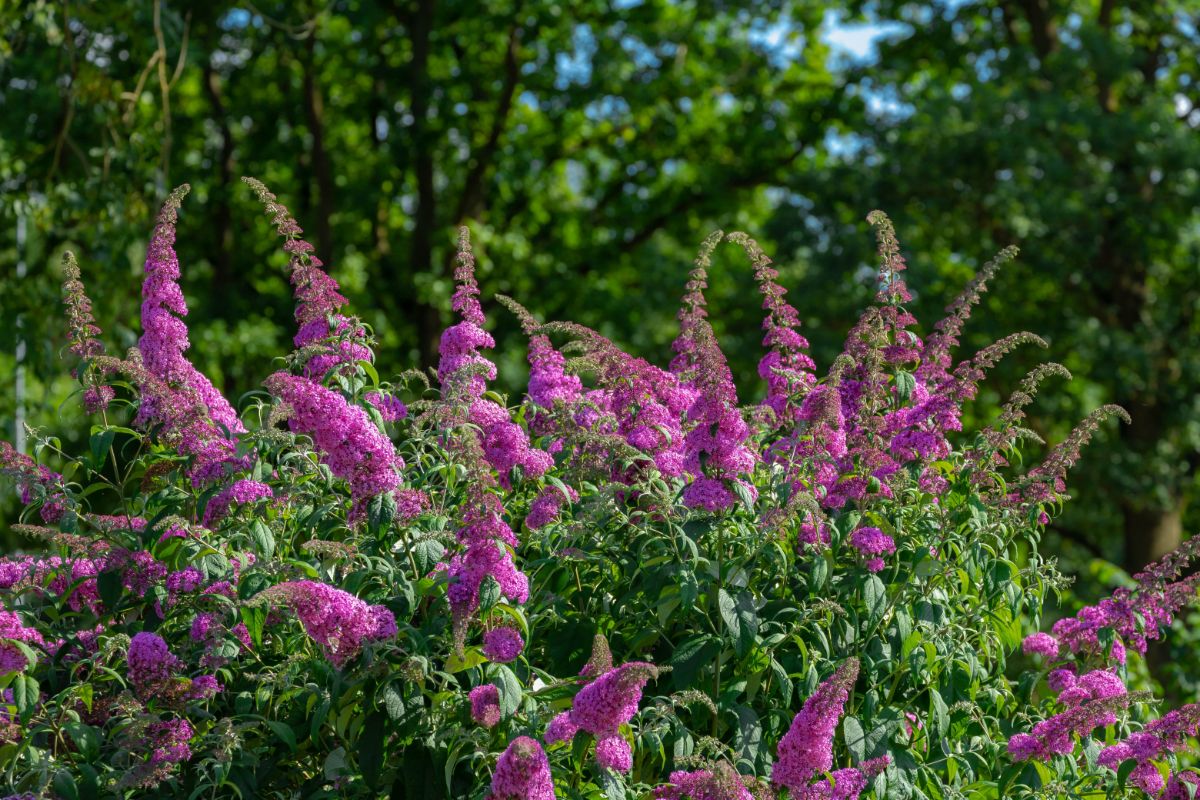
| Plant name: | Butterfly bush |
| Lighting requirements: | Full sun to part shade |
| Watering requirements: | Moderate to low |
| Bloom time: | Mid-summer to early fall |
| Growing zone: | Zones 5 to 9 |
Butterfly bushes are common sights in pollinator gardens. But their sweet, floral fragrance isn’t just great for butterflies. Humans love the scent too!
Butterfly bushes grow up to 15’ high and produce tons of long and draping flowers in purples, blues, pinks, yellows, and white. Flowers appear in mid-summer to early fall and are quite long-lasting. For more attractive-looking plants, prune away dead or broken branches from time to time, which will encourage more leafy growth.
12. Heliotrope (Heliotropium arborescens)
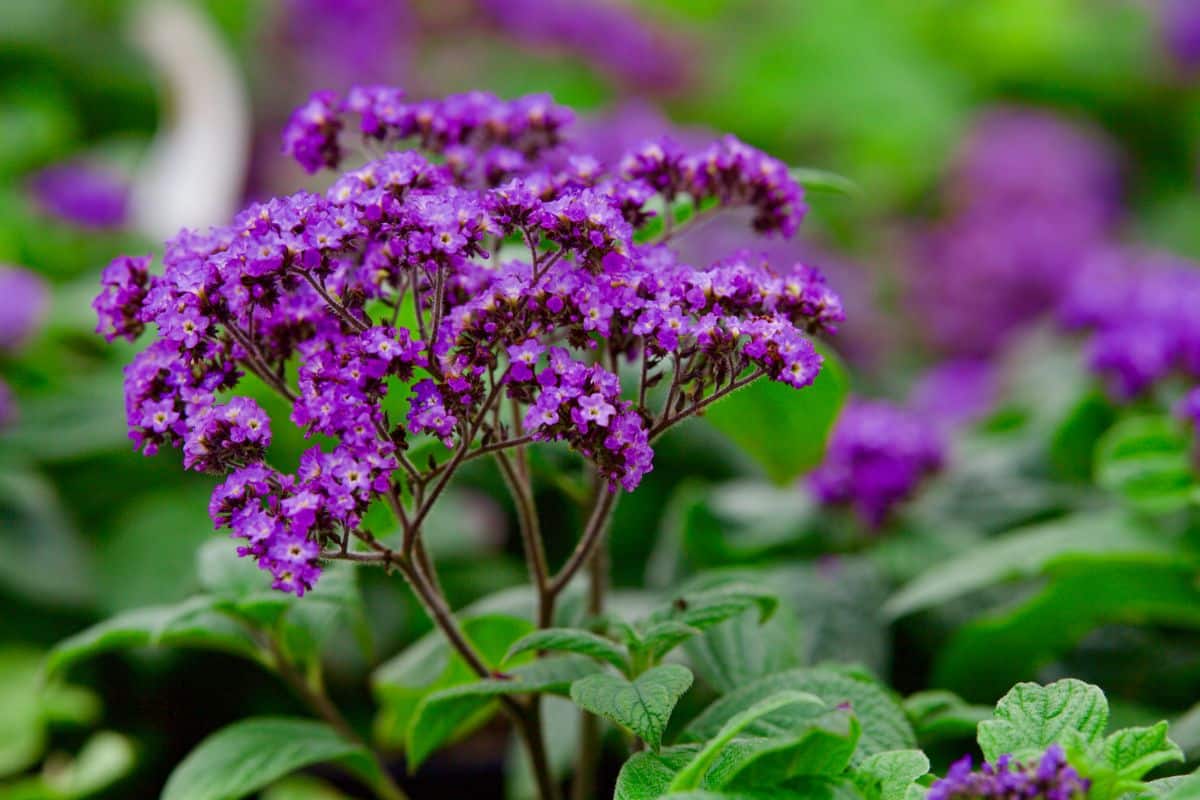
| Plant name: | Heliotrope |
| Lighting requirements: | Full sun |
| Watering requirements: | High |
| Bloom time: | Summer to fall |
| Growing zone: | Zones 10 to 11 |
Heliotropes are less commonly planted ornamentals, but they have been gaining popularity in recent years. These highly scented flowers come in both purple and white and offer a unique fragrance that is hard to describe. Some note that the aroma has hints of vanilla to cherry, but we’ll leave that for you to decide!
Heliotropes are turnsoles, meaning they turn towards the sun as it moves across the sky. So, don’t be worried if your plant looks a bit different from hour to hour – that’s just your plant moving to capture the light.
As a smaller fragrance plant, heliotropes only grow about 18” tall. That makes them well-suited for planting towards the front of ornamental beds but if you really want to get the most out of your flowers, try potting them up in window boxes so you can smell their sweet fragrance indoors and out.
13. Tall Phlox (Phlox paniculate)
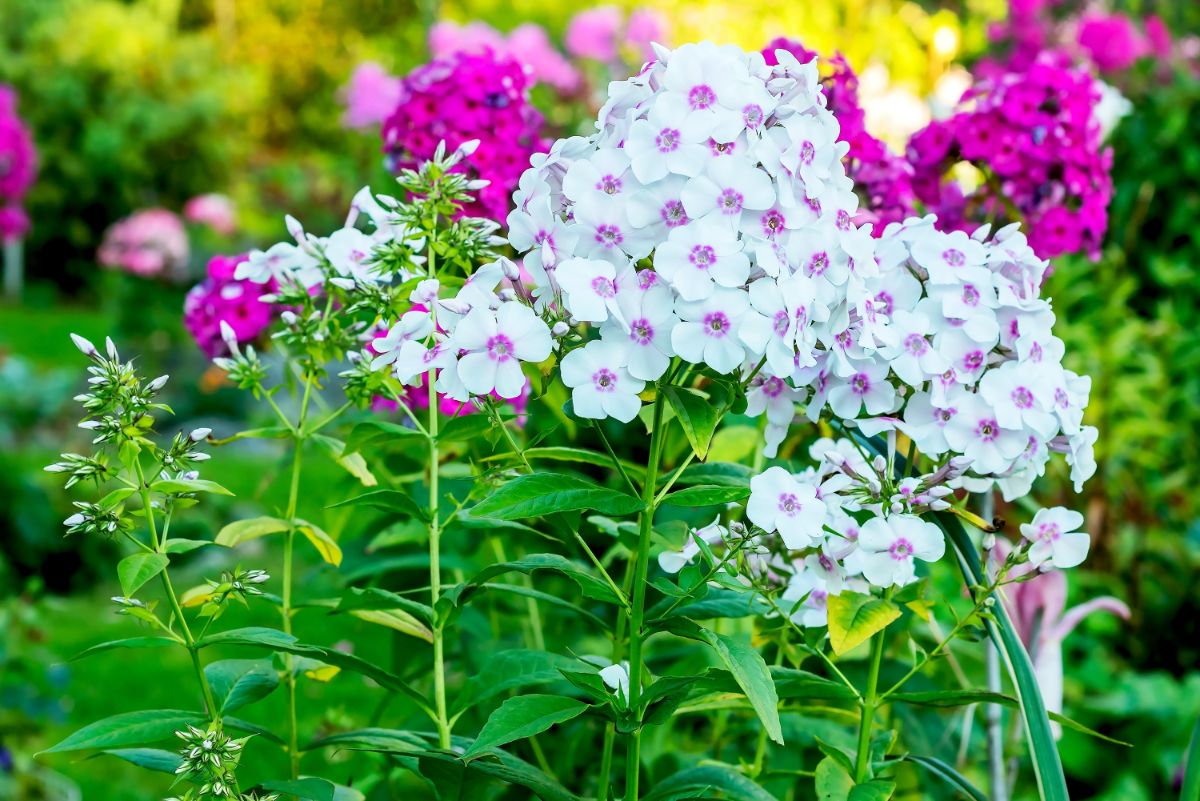
| Plant name: | Tall phlox |
| Lighting requirements: | Full sun to part shade |
| Watering requirements: | Moderate |
| Bloom time: | Mid- to late summer |
| Growing zone: | Zones 4 to 8 |
There are several different types of phlox, including the ever-popular creeping phlox groundcover. But if you’re looking for a plant with rich, floral aromas, tall phlox is the way to go.
Flowers bloom in mid-to-late summer, forming dense, candy-colored clusters atop the plants’ long stems. The scent is strongest on warm summer days and is sure to bring in lots of pollinators too. Phlox is particularly appealing to many different sorts of butterflies, which makes it a prime plant for pollinator gardens.
Phlox tends to be vulnerable to mildew issues caused by overcrowding. That makes it imperative that you follow proper spacing instructions with this plant. Spraying your plants preventatively with a baking soda or milk spray throughout the growing season can help too.
14. Freesia (Freesia spp.)
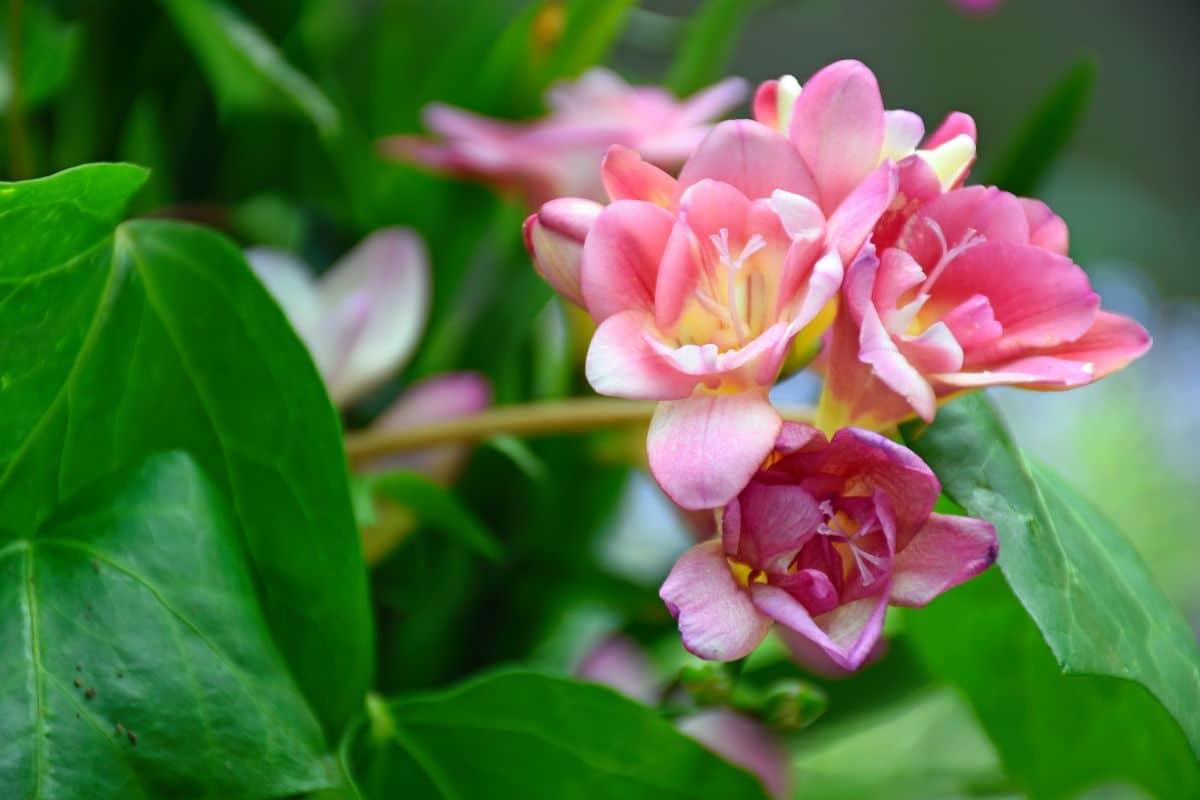
| Plant name: | Freesia |
| Lighting requirements: | Full sun to part shade |
| Watering requirements: | High |
| Bloom time: | June to September |
| Growing zone: | Zones 9 to 10 |
Freesia’s tunnel-like flowers come in almost every color imaginable and appear at the top of long and slender spikes. The dazzling colors are only accented by the flowers’ sweet, fruity fragrance, which some have likened to the scent of ripe strawberries. With their scent and beauty, it’s no wonder why these plants are so popular among florists!
Native to South Africa, freesia prefers consistently moist soil, which means it may need a bit more tending if you live in a hot and dry location. It also grows best with an annual dose of a quality fertilizer applied before the blooms develop. As your freesia matures, be prepared to divide your plants every 3 to 5 years to prevent overcrowding.
15. Joe Pye Weed (Eutrochium purpureum)

| Plant name: | Joe Pye weed |
| Lighting requirements: | Full sun to part shade |
| Watering requirements: | Moderate |
| Bloom time: | Mid-summer to early fall |
| Growing zone: | Zones 4 to 8 |
Another top pollinator flower, the Joe Pye weed, looks a bit like milkweed, with large clusters of upward-pointing flowers. Flowers are purple in color and bloom from late summer into fall. Flowers are also quite long-lasting, so once they appear, be prepared for lots of garden color and visiting butterflies too.
Growing up to 8’ high, Joe Pye weed looks particularly stunning when planted en masse or when interplanted with complementary colored blooms, like black-eyed Susan. This plant naturally grows in moist areas and along streambanks, so it will do best when sown in a consistently moist environment. It can also adapt to a wide range of soil types.
16. Wisteria (Wisteria spp.)
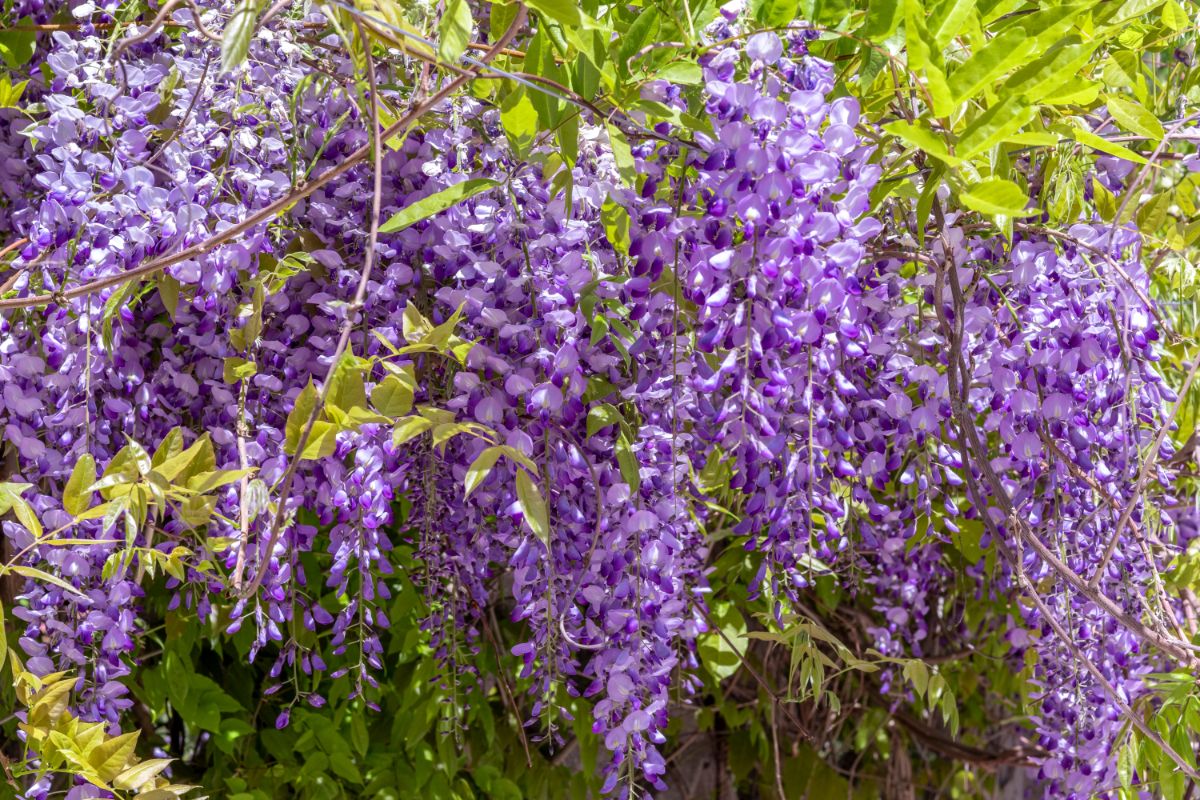
| Plant name: | Wisteria |
| Lighting requirements: | Full sun to part shade |
| Watering requirements: | Low |
| Bloom time: | Early May |
| Growing zone: | Zones 5 to 9 |
Wisteria is a common sight in cottage gardens, but it can make a gorgeous addition to any garden design. An abundance of cascading clusters of purple flowers create a stunning display in springtime, and the rich aroma smells magical when it catches on a gentle breeze.
Wisteria is a climbing plant and can grow massive, so you will want to add some supports or trellising to maintain your plant’s appearance. Relatively low maintenance, wisteria can grow in a range of soils, but try amending nutrient-poor soil with compost prior to planting. Wisteria is also drought-resistant once established and has low fertilizer needs – in fact, too much fertilizer can inhibit flower formation.
17. Daphne (Daphne odora)
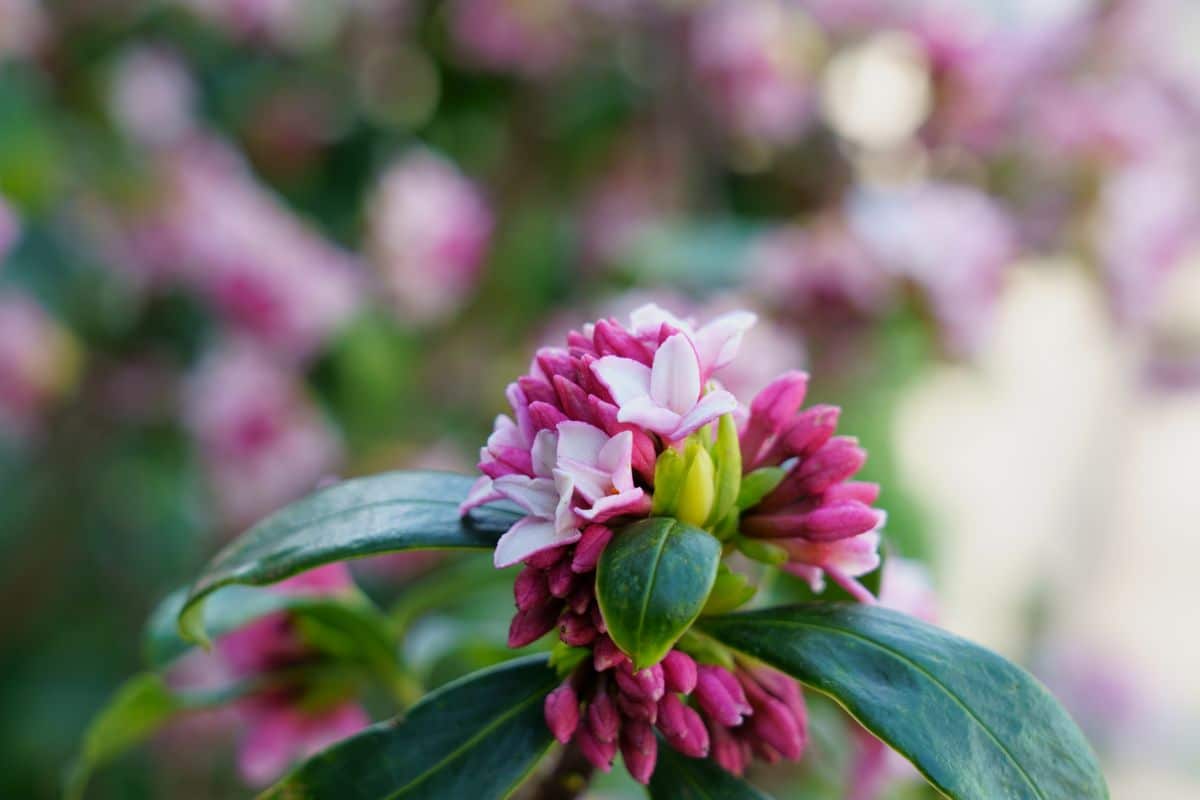
| Plant name: | Daphne |
| Lighting requirements: | Part shade |
| Watering requirements: | Moderate to low |
| Bloom time: | Early spring |
| Growing zone: | Zones 4 to 9 |
A less commonly grown shrub, daphne blooms in early spring with richly scented flowers in pale pink and white. After flowers fade, the plant produces bright, red berries; however, these berries are toxic if ingested. But, if you have a pollinator garden, keep in mind that wild birds, like thrushes, love daphne berries!
Daphne naturally grows in Japan and Korea, but it can grow well in other spots too. Once mature, daphne shrubs reach about 3’ tall and make the perfect complement to winter garden beds. There are between 75 and 90 species of daphne in existence today, so you may want to do a bit of research to find the best one for your growing location.
18. Peonies (Paeoniaspp.)
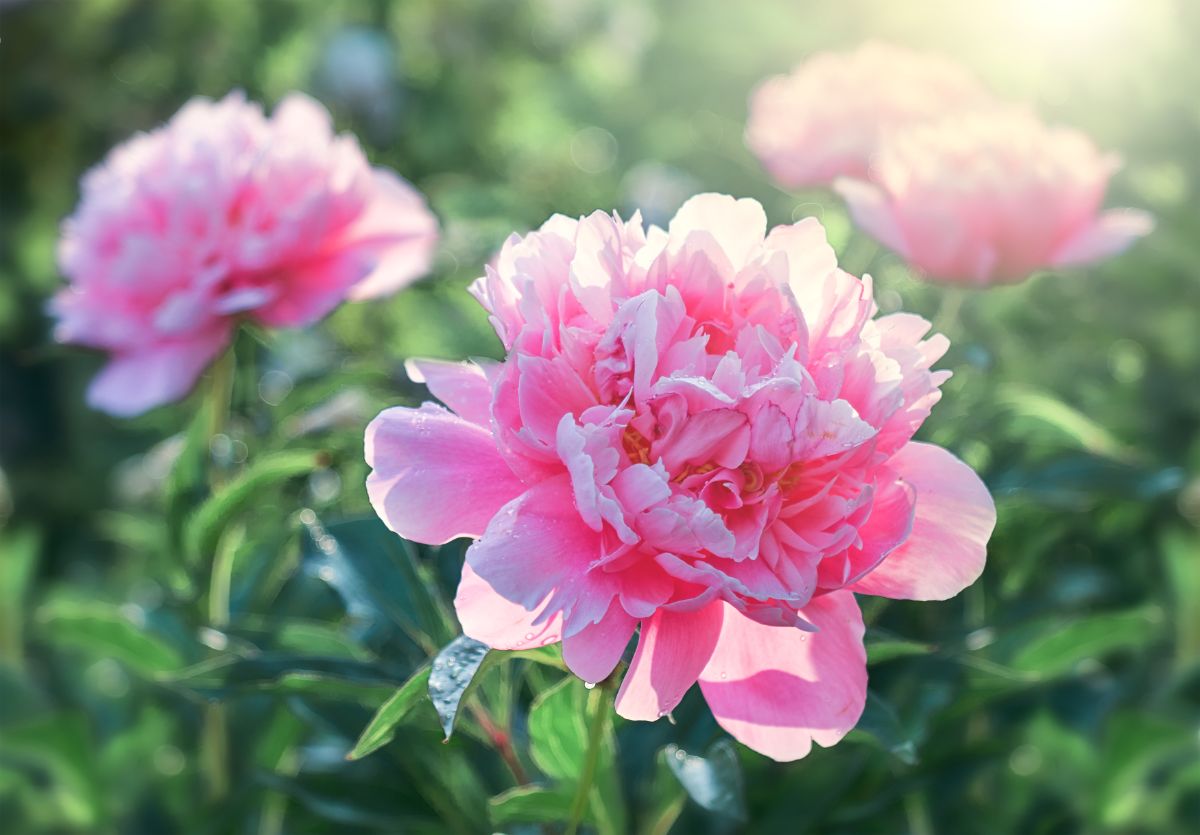
| Plant name: | Peonies |
| Lighting requirements: | Full sun |
| Watering requirements: | Moderate |
| Bloom time: | Late spring to early summer |
| Growing zone: | Zones 3 to 8 |
Peonies are another gorgeous flower choice that is highly perfumed with a sweet fragrance that smells a bit like baby powder. Flowers are globular and often boast ruffled petals, which are attractive both in the garden and in cut flower arrangements. Just be aware that not all peonies are fragranced, and peonies with double blooms in pink and white tend to have the strongest scent.
Blooming from late April to June, peonies make a wonderful pairing with other springtime favorites, like lilacs, as they can become a bit top-heavy, especially when flowering; adding bamboo supports or tomato cages around your plants can keep them growing upright. Be sure to plant your peonies with adequate spacing, too, as they can be susceptible to mildew issues.
19. Mock Orange (Philadelphusspp.)
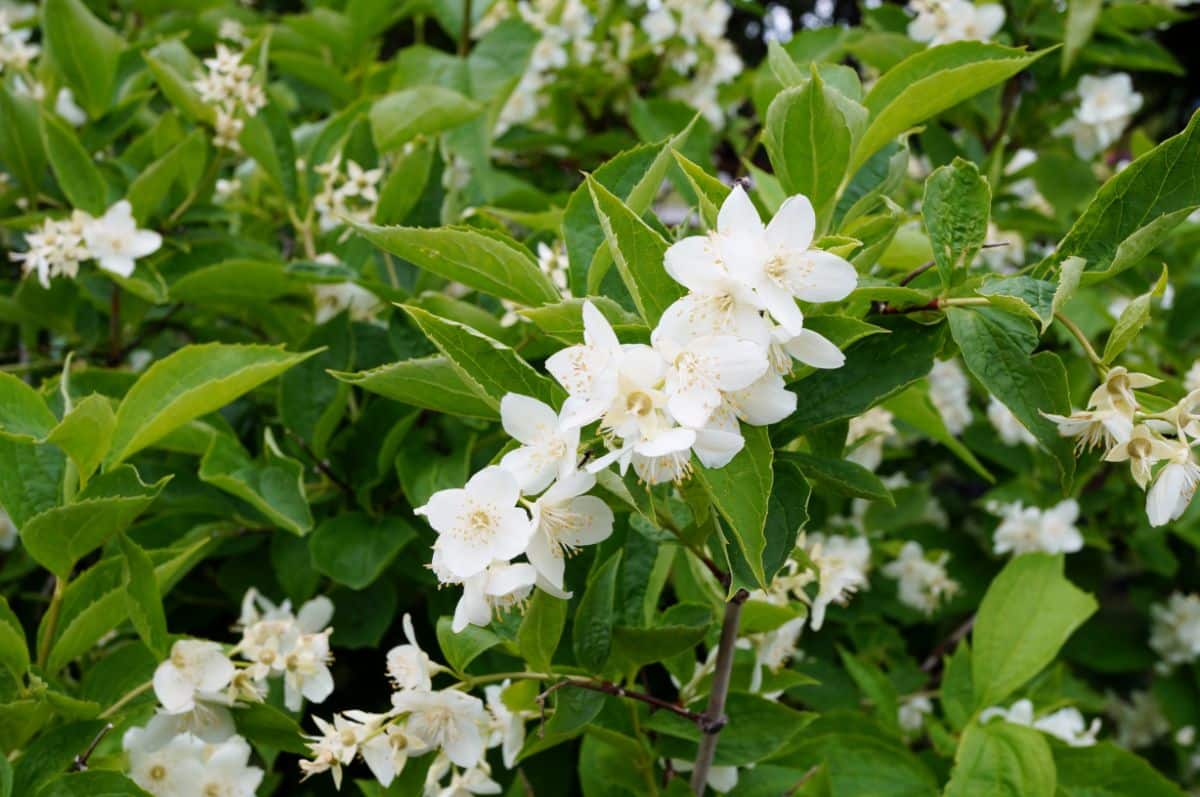
| Plant name: | Mock orange |
| Lighting requirements: | Full sun to part shade |
| Watering requirements: | Moderate |
| Bloom time: | May to June |
| Growing zone: | Zones 4 to 8 |
Mock oranges are flowering shrubs that can grow up to 12’ high. As many other flowering plants grow more compactly, mock orange makes a stunning complement to lower-growing roses, phlox, and other fragrance garden favorites.
Primarily kept for its aromatic, white blooms, mock orange’s dense growth habit makes it just right for adding a bit of extra privacy to outdoor spaces. Mock oranges generally bloom from May to June and emit a sweet, citrusy scent. Be sure to prune your plant back after flowers begin to fade to encourage more vigorous growth and to maintain your shrub’s appearance.
20. Sweet Pea (Lathyrusodoratus)
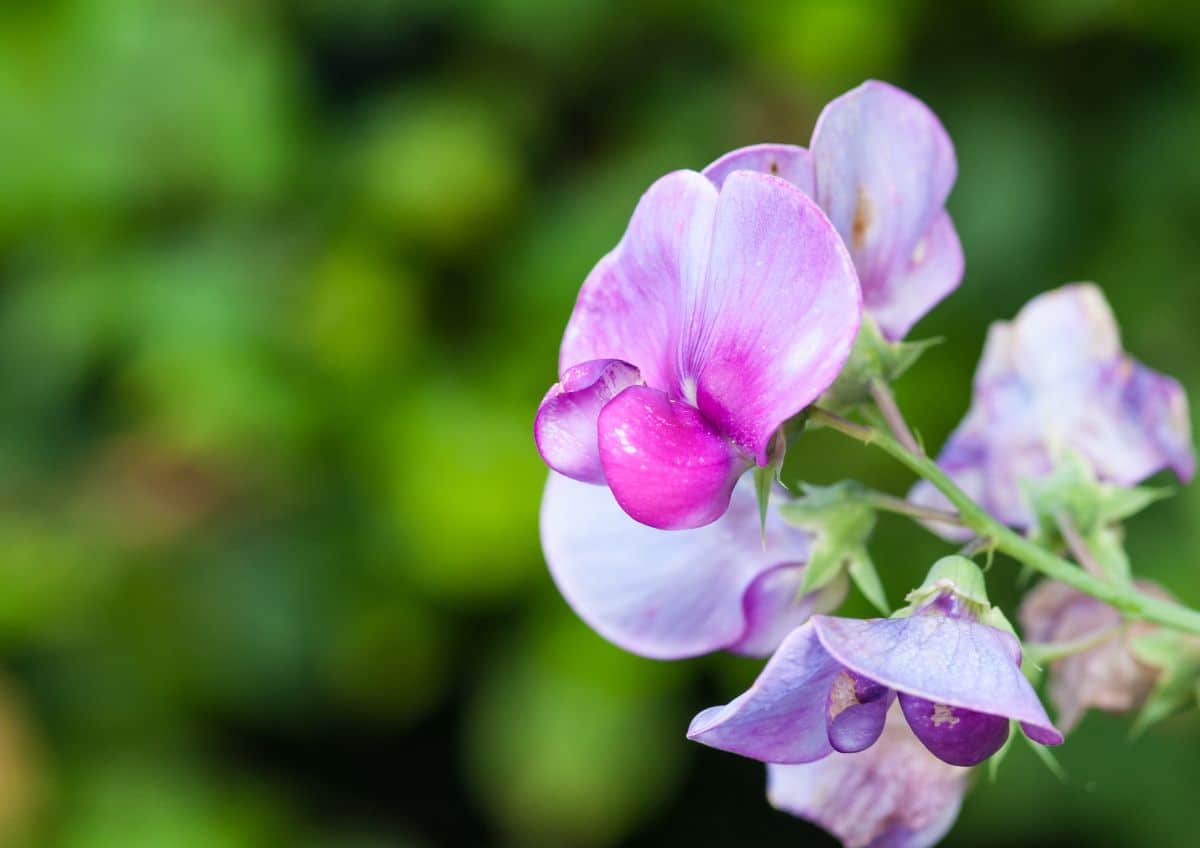
| Plant name: | Sweet pea |
| Lighting requirements: | Full sun, prefer some dappled shade in the afternoon in hot climates |
| Watering requirements: | Moderate |
| Bloom time: | Spring; can be sowed again in late summer for autumn flowers |
| Growing zone: | Zones 3 to 8 |
Fragrant sweet peas are must-haves in the spring garden thanks to their delicate blooms that come in almost every color. Many gardeners opt to trellis their sweet pea plants or train them to grow along deck railings or other supports for a more vertical appearance. Grown in this manner, sweet pea plants can easily reach 8’ high.
Beyond their floral aroma, sweet peas are the top plants to try for bouquet-making and pressed flowers. What’s more, sweet peas are fast-growing and low maintenance, and very easy to grow from seed. Like other pea types, sweet peas don’t tolerate heat very well, so they will fade when summer temperatures begin to climb.
Frequently Asked Questions
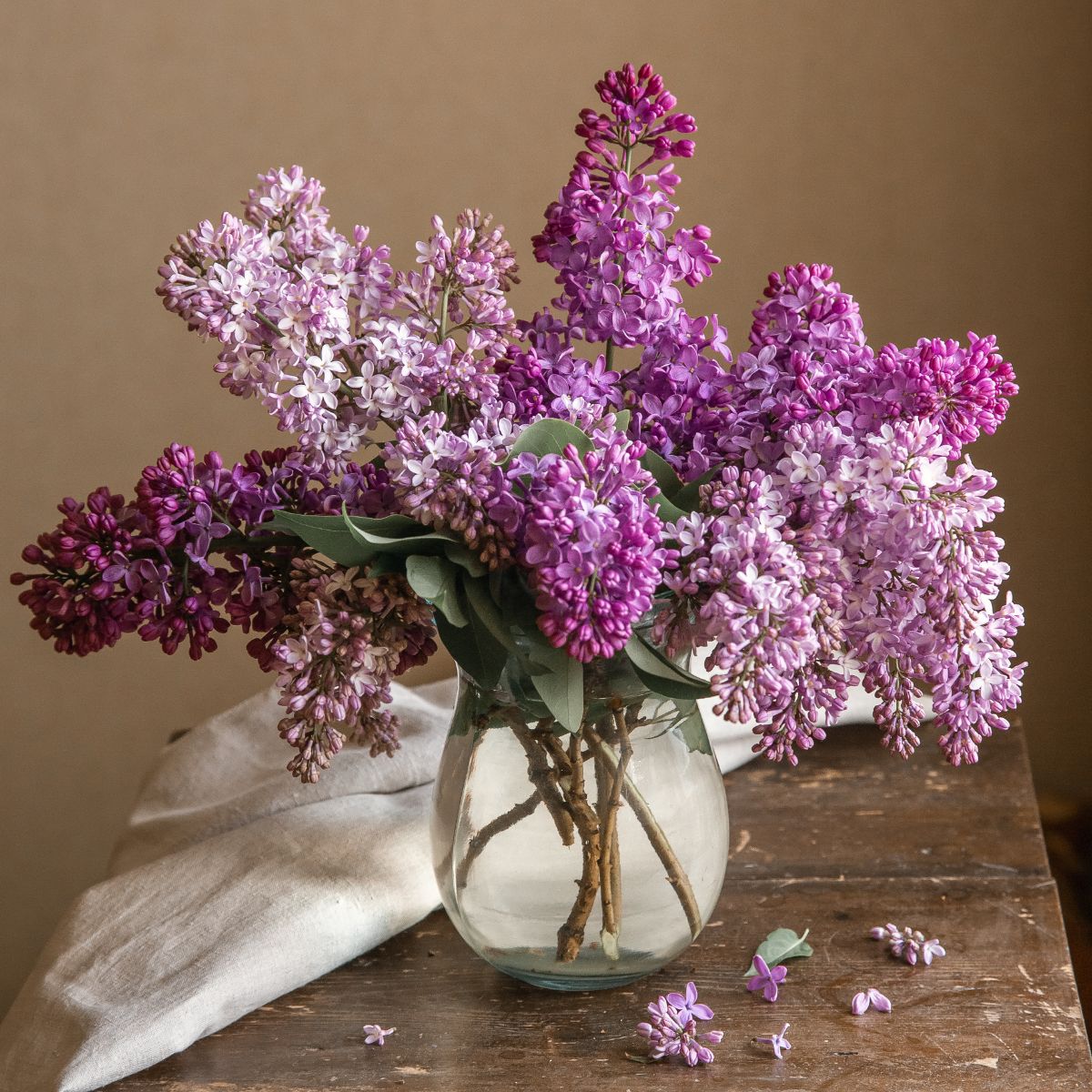
While there are a number of different fragrance plants to choose from, some of the most popular picks include lilac, rose, gardenia, jasmine, and honeysuckle. These plants have such delightful aromas; they are often used to scent perfumes and beauty products too!
Fragrant flowers, like flowering tobacco and peonies, smell amazing when in bloom. However, after flowering plants fade, plants with fragrant foliage can keep your garden smelling sweet all year round. In particular, culinary herbs, like sage and rosemary, offer lots of fragrance in the garden.
There’s a reason why roses are so popular among home growers and florists alike: they are some of the most scented flowers around! For that perfect rose scent, try out heirloom rose varieties like Old World roses and English roses.
Culinary herbs, like rosemary and sage, have very aromatic leaves that smell divine in garden beds. But, for a truly magical experience, try planting scented groundcovers, like creeping thyme or Corsican mint. These easygoing plants produce a rich aroma when crushed underfoot and will take your fragrance garden design to the next level.
Summary
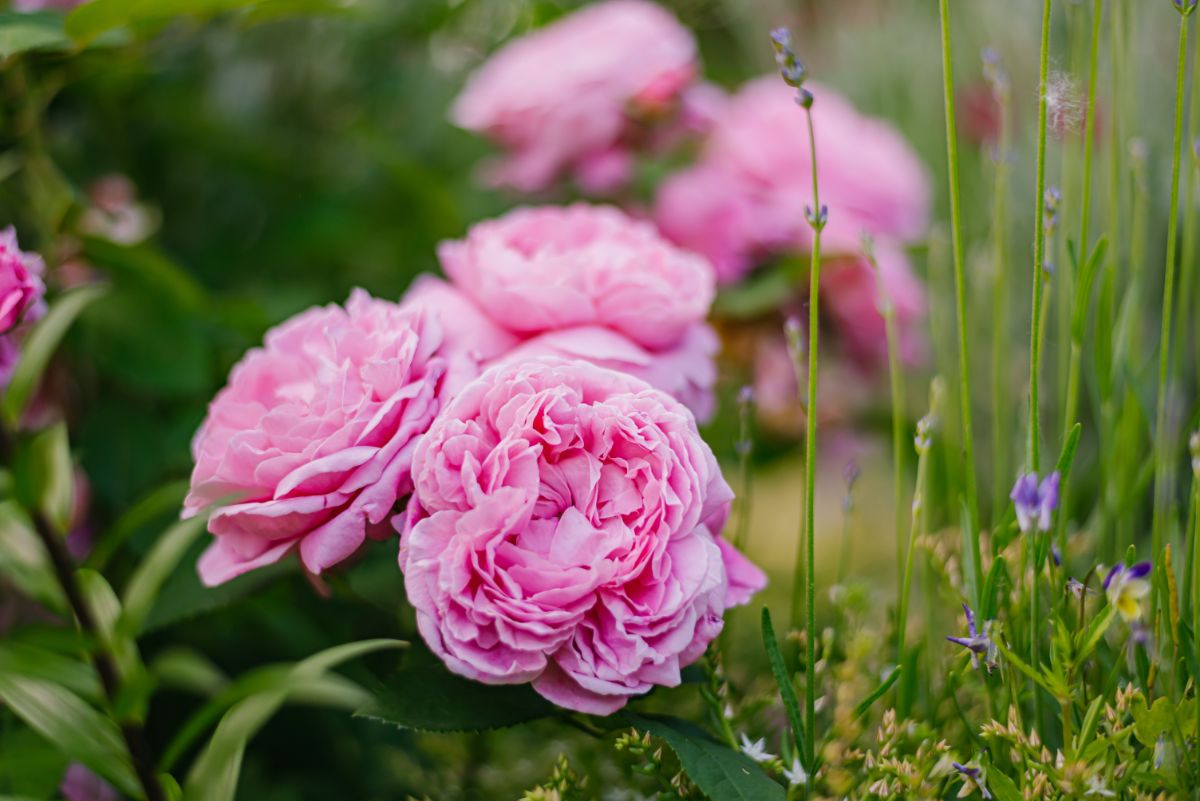
When it comes to planting your outdoor space, there are so many different garden designs to try. Some home gardeners focus on cut flowers, while others prefer to cultivate a moon garden for nighttime enjoyment. But if you want a garden type that offers the best of both worlds, scent gardens are the way to go.
Scent gardens offer a combination of gorgeous blooms for cut flowers as well as fine fragrances to appreciate in your garden, noon or night. Even better, depending on the plants you pick, scent gardens can be low maintenance, even if they look like a million bucks!
We hope you enjoyed this article. For more garden inspiration, check out our piece on growing your own pollinator garden for more scented flower favorites.

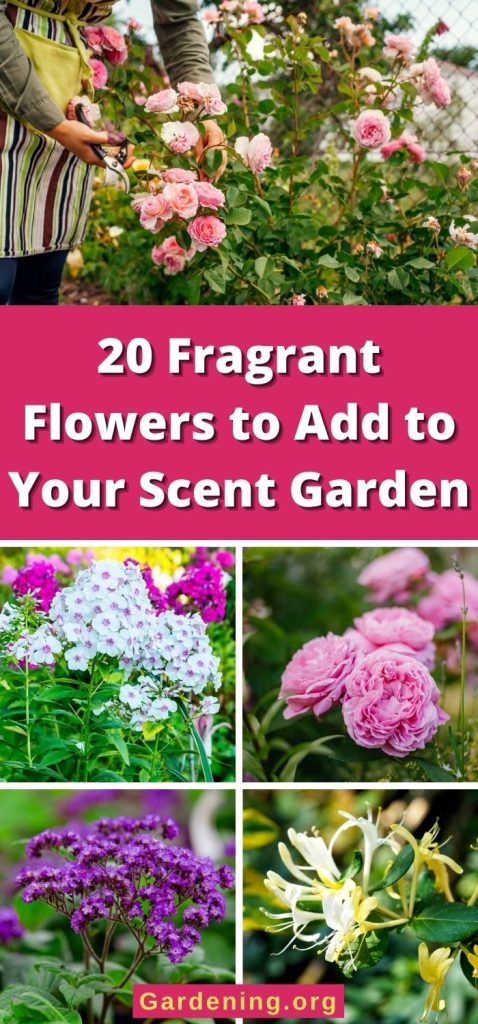
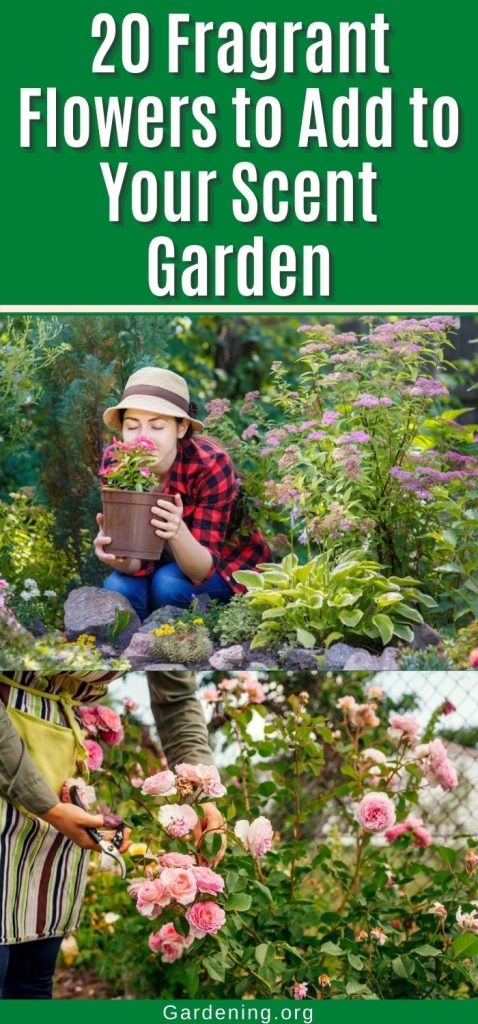
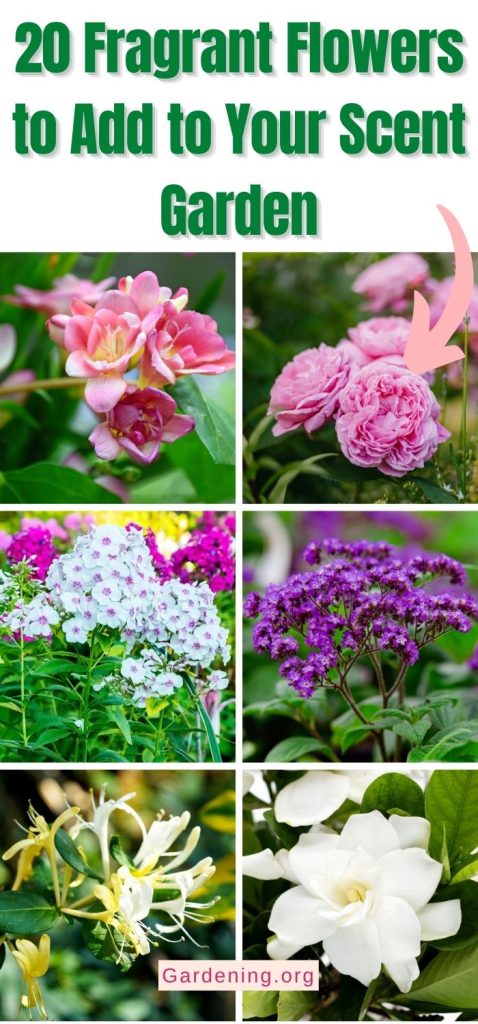
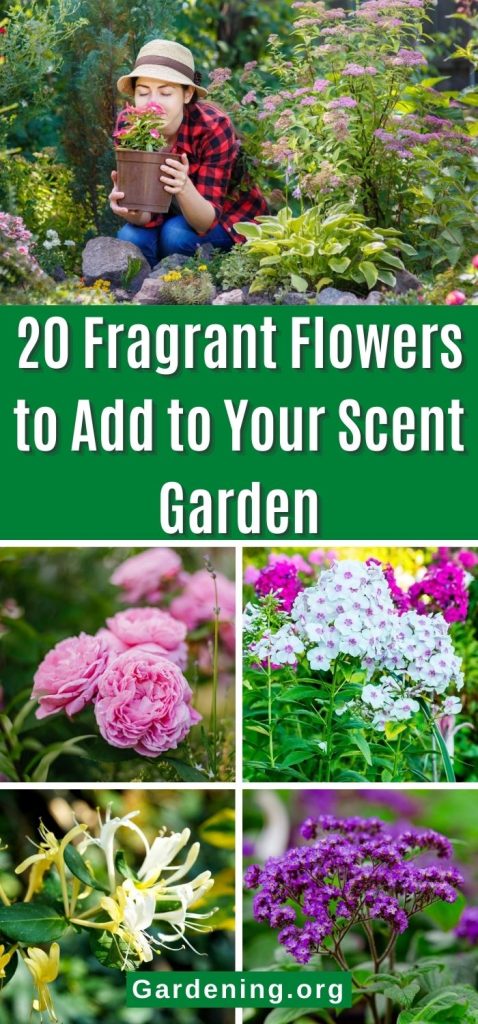

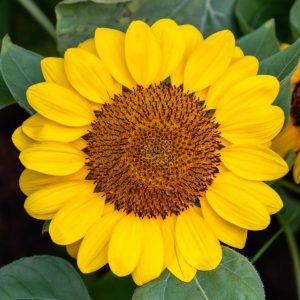
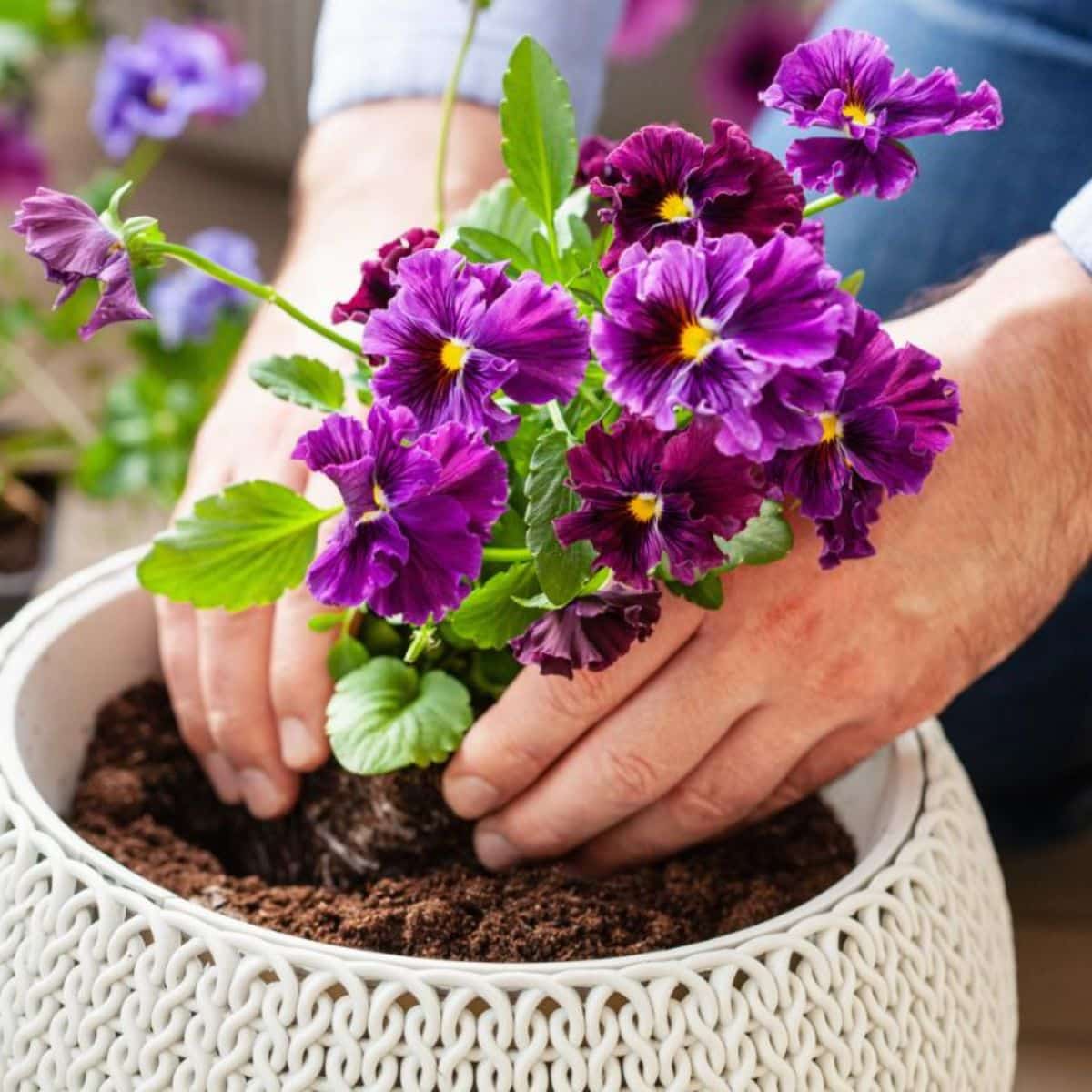
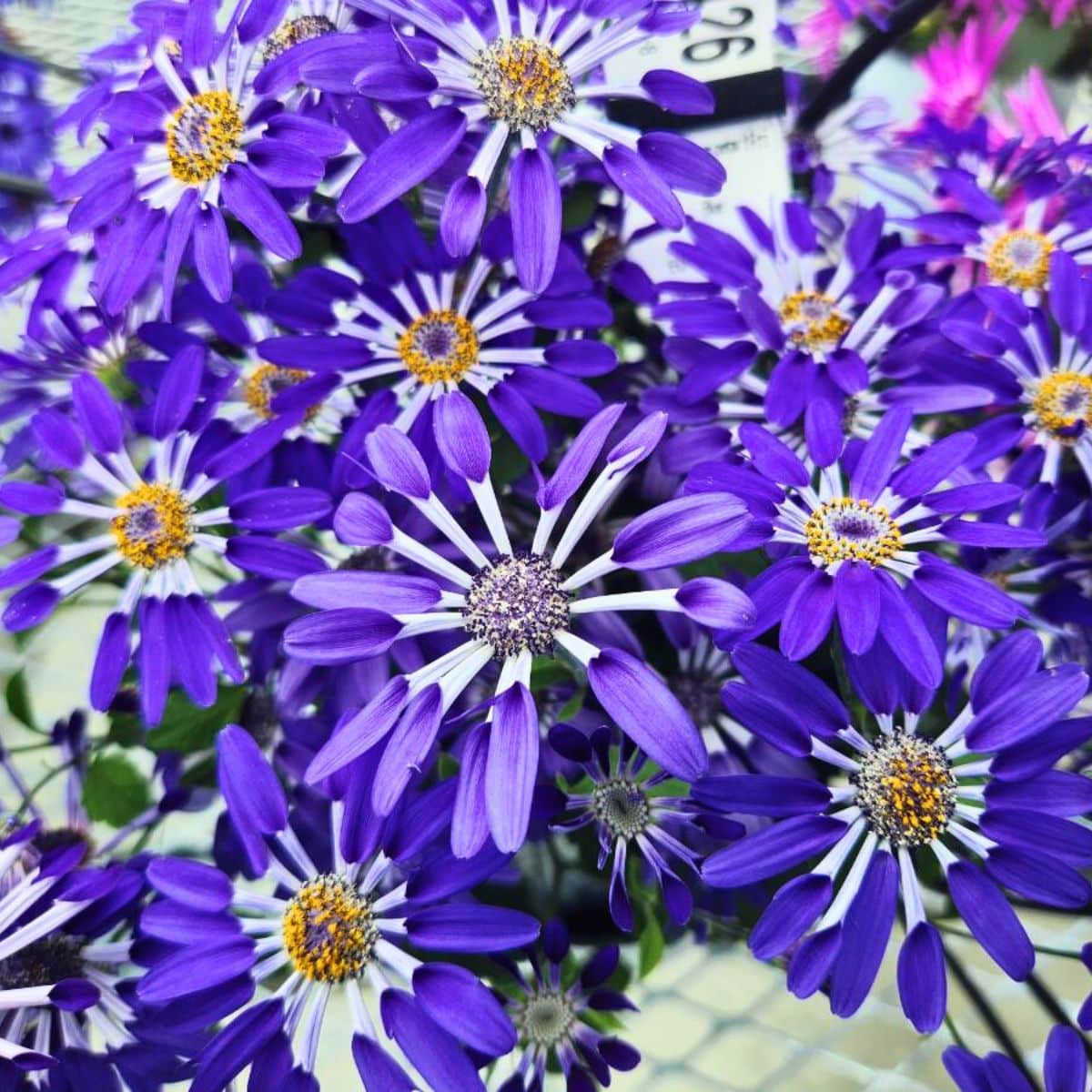
Leave a Reply